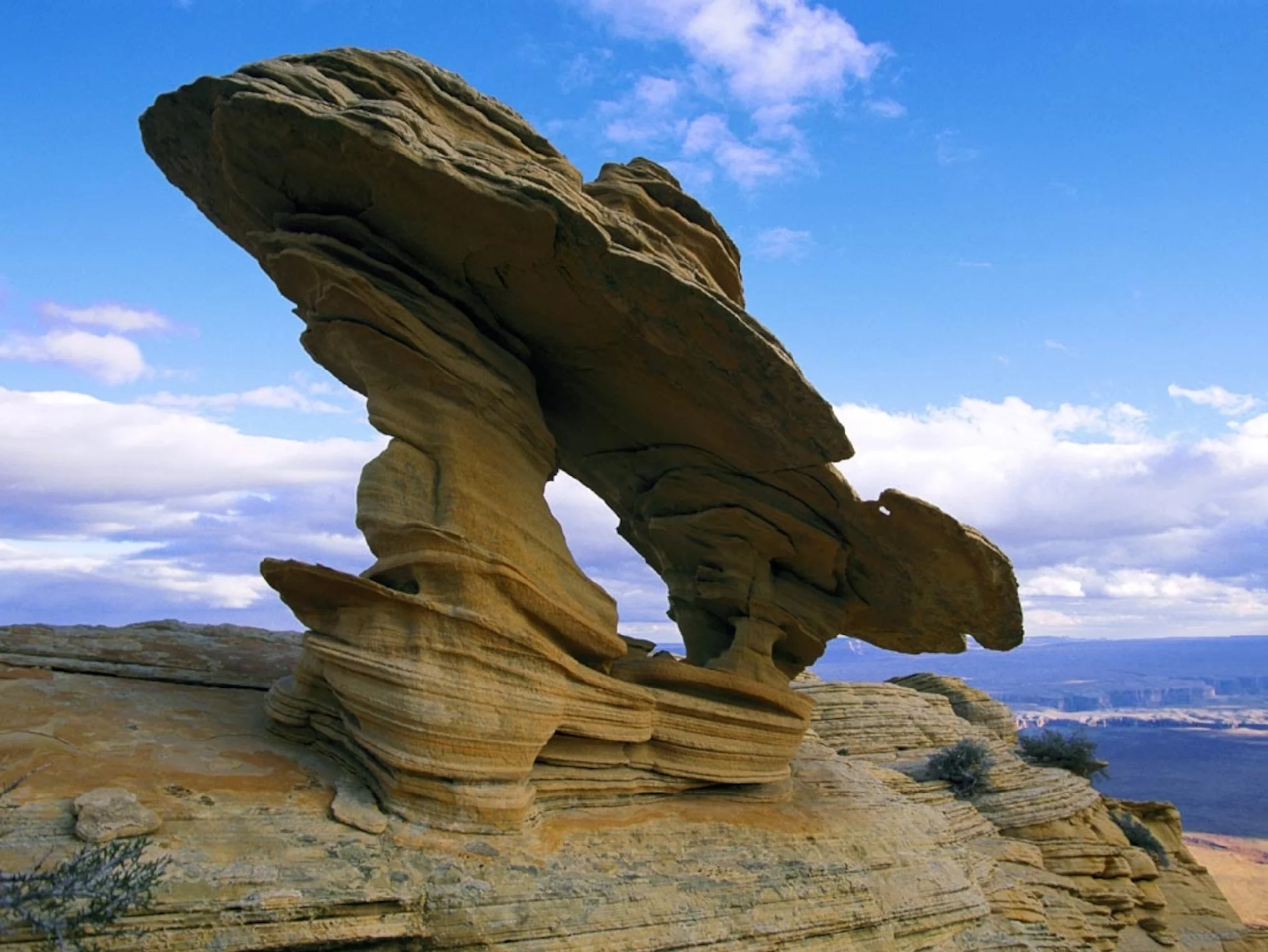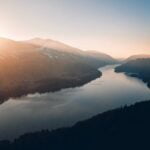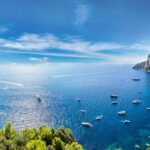Imagine the Earth as a giant canvas, where water is the master artist. Water, in its many forms, is the sculptor that shapes our planet’s landscapes. It carves out mountains, creates valleys, and molds coastlines. Come explore the fascinating world of water’s role in weathering and erosion, and discover how it leaves an unforgettable mark on our planet’s geological tapestry.
Weathering and Erosion: The Forces that Shape Our Planet
Have you ever noticed how mountains turn into hills, or cliffs become sandy beaches? That’s the work of weathering and erosion, the sneaky little processes that never stop working on our planet’s landscape.
Weathering: The Quiet Chiseler
Weathering is like a slow-motion chisel that breaks down rocks into tiny pieces. It does this in two ways:
- Physical weathering: Temperature changes make rocks crack, ice makes them split, and wind and water scrape them away.
- Chemical weathering: Rainwater and acids dissolve rocks, turning them into softer stuff.
How long a rock is exposed to these weathering forces matters a lot. The longer they’re exposed, the weaker they become.
Erosion: The Silent Mover
Once rocks are weakened by weathering, they’re ready for erosion, which is like moving day for their tiny pieces. Water, wind, ice, and even gravity do the hauling, carrying them away to new homes.
- Water: Rivers and streams are like mini conveyor belts, carrying sediment (the tiny rock pieces) downstream.
- Wind: It picks up fine dust and sand and carries them far, far away.
- Ice: Glaciers grind rocks and carry the powder they create.
- Gravity: When rocks loosen up, they slide or fall down slopes.
Deposition: The End of the Road
When water or ice slows down, it drops the sediment it’s been carrying. This is called deposition. These piles of sediment can turn into new rocks, preserving clues about the past.
Water is the real MVP of both weathering and erosion. It helps break down rocks, carries them away, and drops them off in new places. So, next time you see a mountain or a beach, remember the silent but powerful forces that created them.
Learn about the processes involved in the formation and transformation of clastic sedimentary rocks, such as sandstone, shale, and conglomerate. Explore the sediment transport mechanisms that shape these rocks, from erosion and transportation to deposition. Discover the role of diagenesis and lithification in turning loose sediments into solid rocks. Understand the importance of sedimentary facies and sequences in interpreting past environments. Investigate provenance analysis of clastic sediments to trace the origin of these rocks. Uncover the economic importance of clastic rocks in various industries. Study the different clastic rock classification systems used to categorize these rocks based on their composition, texture, and other characteristics. Examine the texture and composition of clastic sedimentary rocks to gain insights into their depositional environments and diagenetic history. Discover the fascinating world of clastic dikes and other soft-sediment deformation structures that provide clues about past tectonic and sedimentary processes. Finally, explore paleocurrent indicators in clastic rocks to reconstruct ancient flow directions and interpret the paleogeography of sedimentary basins.
How do weathering and erosion shape Earth’s surface?
Just like how a sculptor chisels away at a block of stone to create a masterpiece, the forces of weathering and erosion are constantly reshaping the surface of our planet. Together, they’re like an unstoppable team of nature’s artists.
Weathering: The Master Chiseler
Imagine you have a big old rock. Over time, the relentless freeze-thaw cycle of cold nights and warm days cracks it like a broken plate. That’s physical weathering. Or, maybe acidic rain starts to dissolve the rock’s minerals, turning it into a crumbly mess. That’s chemical weathering. In both cases, the rock is being broken down into smaller pieces.
Erosion: The Transportation Service
Once the rock is broken up, it’s time for the transportation crew to step in. Gravity pulls the bits of rock downhill, while wind and water carry them away like tiny ships on a river. Glaciers act like slow-moving bulldozers, grinding away at the land they pass through. And waves from the ocean splash against cliffs, relentlessly eroding them over time.
The Dynamic Duo: Weathering and Erosion in Action
Together, weathering and erosion are responsible for the diverse and ever-changing landscapes we see on Earth. They’re like a tag team wreaking havoc on the rocks:
- Mountains: When tectonic plates push up the Earth’s surface, weathering and erosion start nibbling away at them, carving out valleys and canyons.
- Arches: Water carves out the soft rock around harder rock, creating stunning natural bridges.
- Cliffs: Waves crash against the base of cliffs, eating away at the land and leaving behind steep, towering walls.
Key Points to Remember:
- Weathering breaks rocks into smaller pieces.
- Erosion transports weathered materials away.
- Weathering and erosion shape Earth’s surface into the amazing landscapes we see today.
So, the next time you look up at a mountain or stand in awe of a cliff, remember the tireless work of weathering and erosion. They’re the dynamic duo that keeps our planet’s surface constantly evolving.
What are the different types of weathering?
Weathering is like a sneaky team of nature’s agents that work together to break down rocks into smaller, crumbly pieces. There are three main types of weathering: mechanical, chemical, and biological.
Mechanical Weathering: The Rough and Tumble Type
Imagine a bully picking on a weaker kid. That’s mechanical weathering. It uses physical force to break down rocks.
- Temperature Fluctuations: When the sun heats up rocks during the day, they expand. When it gets chilly at night, they shrink. This constant stretching and squeezing can cause cracks, leading to rock breakdowns.
- Freeze-Thaw Action: Water is like a mischievous thief that loves to sneak into rock cracks. When it freezes, it turns into ice and expands, widening the cracks until the rock splits apart.
- Abrasion: When rocks get into a rumble with each other or get scratched by wind-blown sand, they start to lose their shape and become smaller.
Chemical Weathering: The Secret Dissolver
Chemical weathering is a bit like a sneaky ninja that changes the rock’s internal structure.
- Acid Attacks: Acid rain, rainwater, and other acidic substances can dissolve minerals in rocks, making them weaker and easier to crumble.
- Oxidation: Oxygen is like a rust-causing agent that can react with minerals in rocks, causing them to break down and form new substances.
- Hydration: Water molecules have a way of wedging themselves into minerals, making them expand and weaken, eventually leading to rock breakdowns.
Biological Weathering: When Nature’s Critters Get Involved
Biological weathering happens when living creatures join the rock-breaking party.
- Plant Roots: Tree and plant roots are like tiny excavators that grow into cracks and pry them open, splitting the rock apart.
- Animal Activity: Animals like burrowing rodents and grazing livestock can scratch rocks or create trails that lead to further weathering.
- Microbe Mayhem: Bacteria and fungi secrete acids and other chemicals that dissolve or weaken minerals in rocks, helping to break them down.
Remember these key points:
- Weathering is like the ultimate rock-destroyer, breaking them down into smaller pieces.
- Mechanical weathering uses physical forces to crack and chip rocks.
- Chemical weathering relies on chemicals to dissolve or weaken rocks.
- Biological weathering involves living organisms that help break down rocks.
- Water plays a major role in both weathering and erosion.
Now you know the different ways nature breaks down rocks. It’s like watching a slow-motion battle where nature’s forces team up to transform these solid structures into smaller, more manageable pieces.
What are the different types of erosion?
Erosion is nature’s way of reshaping our planet. It’s the process where pieces of the Earth, like soil and rocks, get broken down and moved around. Think of it as the Earth’s version of a construction crew, tearing down and rebuilding at the same time.
There are a bunch of different types of erosion, each with its own unique way of getting the job done. Let’s take a closer look:
- Splash Erosion: It’s like when you drop a water balloon on the ground. The force of the impact sends water flying everywhere. In the case of erosion, it’s raindrops hitting the soil and breaking it up into smaller pieces.
- Sheet Erosion: Imagine a gentle stream of water washing over a field. As it flows, it carries away bits of soil in a thin layer, like a smooth sheet.
- Rill Erosion: This is when the gentle stream gets a little more rambunctious and starts carving out small channels in the soil. These channels are like miniature rivers, carrying away even more soil.
- Gully Erosion: Picture a raging river cutting through the land, creating deep, narrow valleys called gullies. Gully erosion is the big boss of erosion, carving out huge chunks of Earth.
So, there you have it, the different types of erosion. They’re all part of the Earth’s natural processes, constantly sculpting and reshaping our planet’s landscapes.
FAQ
Q1: What is the role of water in weathering and erosion?
A1: Water plays a crucial role in both weathering and erosion processes. It can act as a physical agent, mechanically breaking down rocks and soil through processes like abrasion and hydration. Water can also act as a chemical agent, dissolving minerals and aiding in the decomposition of organic matter.
Q2: How does water contribute to mechanical weathering?
A2: Water contributes to mechanical weathering through processes such as freeze-thaw weathering, where water seeps into cracks in rocks and expands when it freezes, causing the rocks to break apart. Water can also cause mechanical weathering through hydraulic action, where the force of flowing water dislodges and erodes sediments.
Q3: What is chemical weathering, and how does water contribute to it?
A3: Chemical weathering involves the breakdown of rocks and minerals through chemical reactions with water and other substances. Water can dissolve minerals in rocks, leading to their decomposition. It can also facilitate the formation of acids, which can further break down rocks.
Q4: How does water transport weathered materials?
A4: Water plays a significant role in transporting weathered materials through erosion. It can carry sediments and dissolved materials away from their source areas and transport them to new locations, where they can be deposited. Water transport can occur through various processes, including runoff, streams, rivers, and even groundwater flow.
Q5: What are some examples of landforms created by water-related weathering and erosion?
A5: Water-related weathering and erosion processes can create various landforms, including canyons, valleys, waterfalls, and cliffs. These landforms are shaped over time by the erosive power of water, which can reshape landscapes and create unique geological features.
- Green Natural Sandstone: Eco-Friendly Building Solutions - April 19, 2025
- Red Cross Flag: Protecting Humanity Through History - April 19, 2025
- China II Review: Delicious Food & Speedy Service - April 17, 2025
















